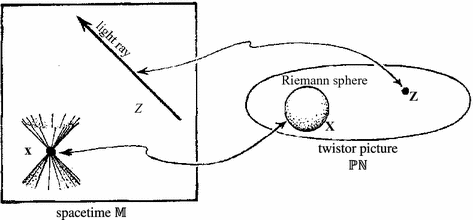There’s a new preprint on the arXiv from Polyakov, entitled From Quarks to Strings, in which he tells the story of his involvement with string theory over the years. He begins:
In the sixties I was not much interested in string theory. The main reason for that was my conviction that the world of elementary particles should allow field theoretic description and that this description must be closely analogous to the conformal bootstrap of critical phenomena. At the time such views were very far from the mainstream. I remember talking to one outstanding physicist. When I said that the boiling water may have something to do with the deep inelastic scattering, I received a very strange look. I shall add in the parenthesis that this was a beginning of the long series of ”strange looks” which I keep receiving to this day.
Another reason for the lack of interest was actually the lack of abilities. I could not follow a very complicated algebra of the early works on string theory and didn’t have any secret weapon to struggle with it.
After the asymptotic freedom breakthrough, Polyakov quickly saw that a non-perturbative understanding of gauge theory was needed. He (independently from Wilson) developed lattice gauge theory, but acknowledges that, unlike Wilson, he did not have the Wilson loop criterion for confinement. In 3d, he worked out the dual-superconductor picture, where monopoles are responsible for confinement, and he has interesting comments about efforts over the years to use instantons in 4d, something that works for the N=2 supersymmetric case (Seiberg-Witten, and Nekrasov), but not for QCD itself.
The strong-coupling lattice expansion was one thing that encouraged him to look for a gauge/string duality as a way to solve QCD. One idea was to write dynamical equations for the Wilson loop (later called Migdal-Makeenko equations) and find a solution to these as a path integral over surfaces, thus a string theory. About this he writes:
This action is called now the Polyakov action, demonstrating the Arnold theorem,stating that things are never called after their true inventors.
He derived the critical dimension for the string, but was much more interested in trying to understand non-critical strings, especially the four-dimensional string as a tool for studying gauge theories, and the 3d string as a tool to solve the 3d Ising model. Later he realized that it was natural to think of the Liouville mode as a fifth dimension, and by 1996 was studying the idea of using warped 5 dimensions to get gauge/string duality. Here’s how he describes what he was doing in the lead-up to the breakthrough by Maldacena which led to the AdS/CFT conjecture:
At this point I was certain that I have found the right language for the gauge/ strings duality. I attended various conferences, telling people thatit is possible to describe gauge theories by solving Einstein-like equations (coming from the conformal symmetry on the world sheet) in five dimensions. The impact of my talks was close to zero. That was not unusual and didn’t bother me much. What really caused me to delay the publication ([12]) for a couple of years was my inability to derive the asymptotic freedom from my equations. At this point I should have noticed the paper of Igor Klebanov [13] in which he related D3 branes described by the supersymmetric Yang Mills theory to the same object described by supergravity. Unfortunately I wrongly thought that the paper is related to matrix theory and I was skeptical about this subject. As a result I have missed this paper which would provide me with a nice special case of my program. This special case was presented little later in full generality by Juan Maldacena [14] and his work opened the flood gates.
He goes on to make some intriguing comments about the questions of integrability, and that of how to truly understand and derive gauge/string duality from first principles:
The problem of reproducing gauge perturbation theory from the string theory side remains unsolved (and extremely important).
Why should we care about the derivation from the first principles ? After all, in physics we value not so much the proved theorems but correct and powerful statements. However, in this case the lack of the derivation really impedes progress. We do not know how far the gauge /string duality can be extended and generalized. The enormous accumulation of special cases has been useful but not sufficient for deeper understanding. This is why I think that establishing the foundations is one of the most important problems in the field.
Polyakov seems to have always been a skeptic about the idea of using the 10 dimensional superstring to construct a unified theory, instead hoping that some understanding of the 4d non-critical string might lead somewhere. Like most string theorists, he takes the attitude that we need to wait for the results from the LHC and hope that a new clue will emerge and tell us how to make progress along these lines:
As for the problem of string unification, it seems to me that non-critical strings may have some future. However, it may be wise to wait for some more information about Nature (specifically about supersymmetry) which we expect to get from the LHC.


